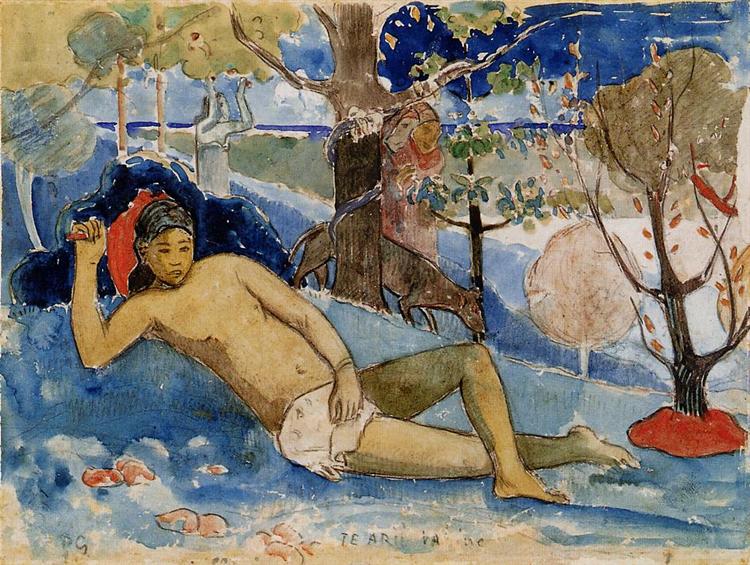תיאור
Paul Gauguin's painting "The Beauty Queen", painted in 1896, embodies the essence of his post-impressionist style, characterized by the bold use of color, simplification of forms and a deep connection with Polynesian culture. In this work, Gauguin presents a female figure that radiates the ideal of beauty through her posture and clothing, in an environment that highlights her prominence.
The composition of The Beauty Queen is notable for its balanced arrangement of elements. The central figure of the woman will occupy a prominent place in the work, surrounded by a decorative background that, although not intended to distract, complements her presence. Gauguin uses vibrant and contrasting colors, such as reds and greens, which reflect his interest in intense tones and emotional expression. The almost flat quality of the surfaces and the lack of traditional perspective guide the viewer's gaze towards the main figure, highlighting her importance in the context of the work.
The portrait of the woman is deeply evocative. With a serene expression, her face exudes a beauty that goes beyond the physical; it is a representation of the mysterious femininity and aesthetic ideal that Gauguin pursued. The flowers that adorn her hair and her clothing indicate not only her status, but also her connection to the nature and culture of Tahiti, the island where Gauguin spent much of his life and whose aesthetic greatly influenced his work. This cultural context is also reflected in the use of decorative patterns that adorn the background, creating an atmosphere that seems to evoke Polynesian spirituality and tradition.
Gauguin, a pioneer in breaking down conventional standards of art, sought to convey in his works a reality beyond mere visual representation, a longing to capture the emotional and the symbolic. The Beauty Queen can be seen as a testament to his quest to express a sense of the exotic and the sublime. At the same time, it serves as a contrast to the aesthetic refinement of earlier artists, as his use of simpler forms and flat colors predates the later evolution toward modern art.
It is also worth mentioning that this painting is linked to a period in Gauguin's life marked by his search for identity and beauty in a world he considered to be in crisis. The idealisation of the female figure and her surroundings not only reflects his own ideals, but is also a commentary on the perception of beauty in non-Western cultures.
The Beauty Queen is more than just a portrait; it is a symbol of Gauguin's fascination with Polynesian culture, fused with his unique artistic language that blurred the boundaries between reality and idealization. In this work, the female figure becomes an icon that not only represents beauty, but also the complexity of a world where art and life are intertwined in a continuous dialogue.
KUADROS ©, a famous painting on your wall.
Hand-made oil painting reproductions, with the quality of professional artists and the distinctive seal of KUADROS ©.
Painting reproduction service with satisfaction guarantee. If you are not completely satisfied with the replica of your painting, we will refund 100% of your money.

